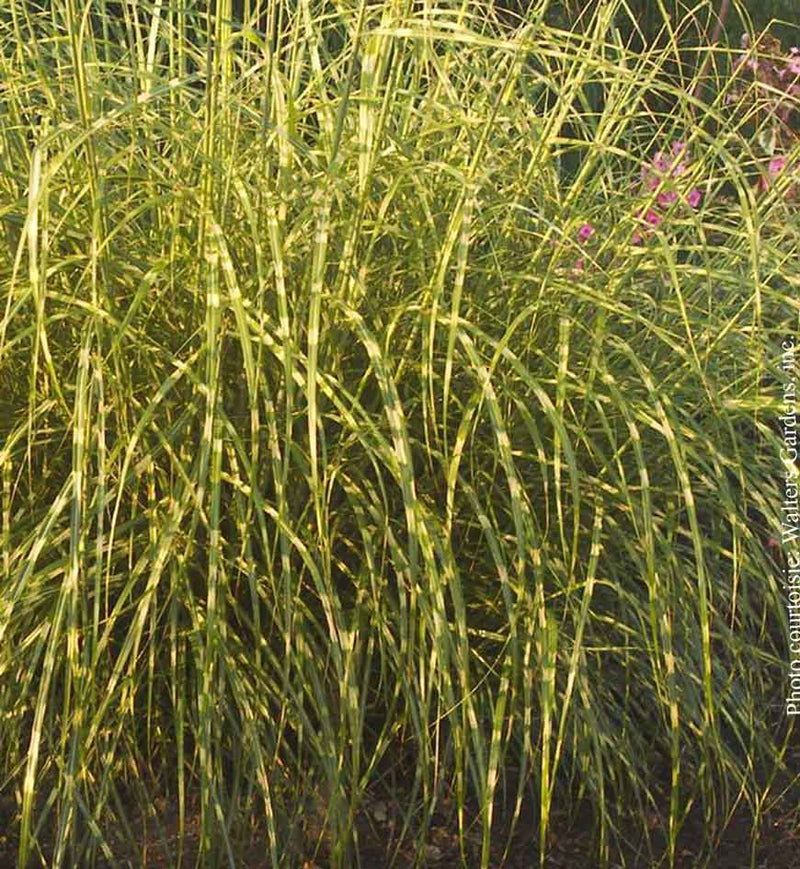

It often initially spreads to disturbed sites such as roadsides, railroad right-of-ways or woodland margins. Miscanthus sinensis will spread somewhat invasively in the landscape, particularly in some of the milder areas of its growing range. Flower panicles and foliage both retain good arching shape, beige color and ornamental interest throughout winter, with enhanced attractiveness often coming from a covering of new fallen snow. Flower panicles gradually turn beige by mid-fall as the seeds mature. Pink to red flowers in feathery, whisk-like, loose terminal panicles (8-10” long) bloom above the foliage from late August to October. Foliage often turns attractive shades of yellow to orange by mid-fall before gradually fading to beige-tan for winter. Linear leaves (to 3-4’ long and 3/8” wide) have tapered tips, serrate margins and whitish to silvery midribs. This grass features a dense clump of upward-arching stems and leaves which give it a rounded, fountain-like appearance.
ZEBRA MISCANTHUS PLUS
east of the Mississippi River plus in several western States including Colorado and California. It has escaped gardens and naturalized in over 25 states in the Central and Eastern U.S.

It is native to lowlands and lower alpine areas in Japan, Korea and China.

Miscanthus sinensis, commonly known as Chinese silver grass, Japanese silver grass or eulalia grass, is a clump-forming warm season grass that typically grows to 3-7’ tall.


 0 kommentar(er)
0 kommentar(er)
